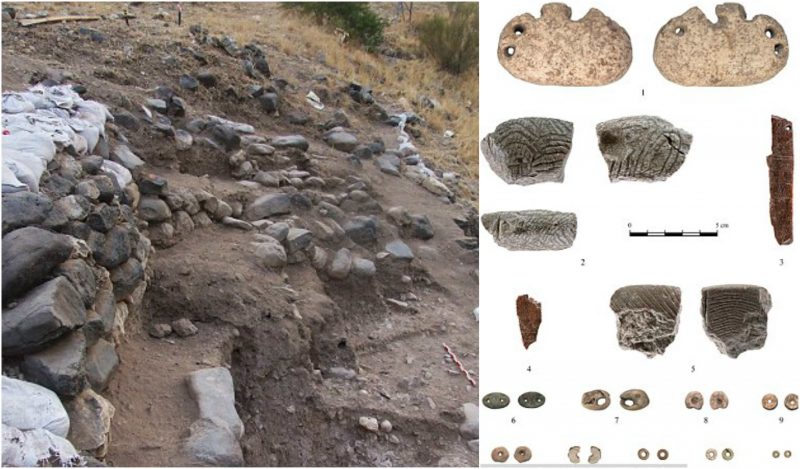Archaeologists have found a prehistoric village that potentially could have belonged to some of the first farmers on this earth. The area is known for its rich and fertile land that facilitated agriculture for these early people. It is located on the east shore of the Sea of Galilee and is a settlement that dates back 12,000 years ago.
Legend has it that the settlement belonged to members of the Natufian culture during the time they transitioned from a hunter-gatherer way of life to farming. This shift was the first time that farmers looked to settle down within a permanent shelter made from stone. Prior to this they moved around based on the movement of the animals that they hunted for survival.
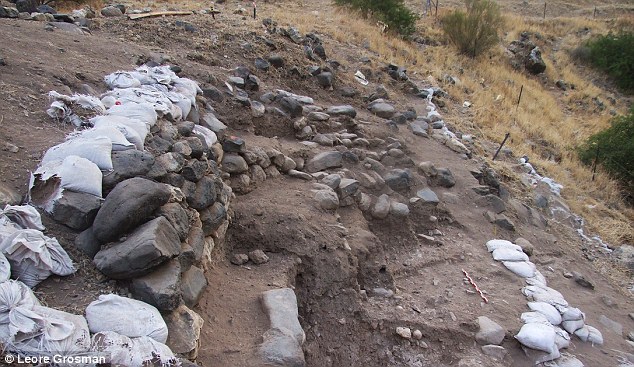
Submerged into the ground are the remains of up to five different buildings. In addition, researchers have found the bodies of five humans. The researchers also found a lot of stone tools, jewelry, and pieces of art that were carved from stone and bone within the ruins.
This site has given experts a different view into how people lived at that time. It is a unique look into humans as they left one period before bursting into the Neolithic period when they began developing more sophisticated methods for farming the land.
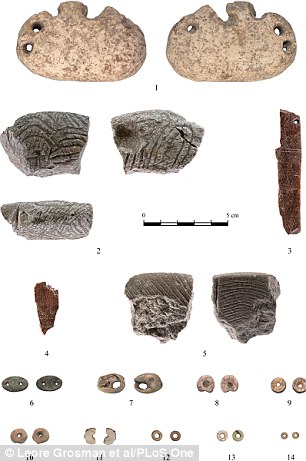
An archaeologist from the Hebrew University of Jerusalem named Dr. Leore Grosman led the excavation. She identified that the village was lived in during a pivotal time in our history, as it exhibits technology from the Paleolithic and Neolithic eras.
In the Journal of Public Library of Sciences One, she said, “The excavation at Nahal Ein-Gev II enables us to closely examine the cultural crossroads at the end of the Paleolithic and the beginning of the Neolithic way of life. Was this extensive and complex occupation a sedentary village? Architectural planning, construction methods, and various aspects of the faunal assemblage provide good indications for site permanence.”
This particular village was located in the Valley of Jordan in Israel. It was dug up in a wadi, or valley, located near the banks of a stream about 1.2 miles (1.9km) from the eastern shore of the Sea of Galilee.
During 2010 to 2013, excavations resulted in the uncovering of this site in an area almost 13,000 square feet (1,207 sq meters). It was here that archaeologists located the remains of several rounded buildings made of stone. It appears that each one was dug 15 inches (38cm) into the ground. The idea behind this was to erect buildings that were semi-subterranean in nature.
It was at two locations on the site that human remains were found. First was a woman buried on her back and curled into a tight ball. This indicated that she may have had her body wrapped up or placed in some kind of bag or sack. There were four additional human remains in a larger burial pit. This included another woman buried in a similar manner to the previously described female.
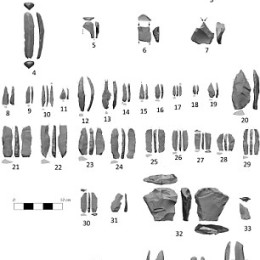
Archaeologists noticed that the bones belonging to the other three people were scattered around her remains. This indicates that the area was dug up repeatedly for each person at the time of their death. These scientists also came across a rich assembly of stone tools, including blades that were used for butchering animals and scraping their skins. They also found sickle blades that were likely used for cutting crops.
Residents were still hunting and butchering gazelles. Archaeologists found the animal remains on the site, and also came across remains of wild cattle, wild goats, wild boar, and deer. Even more interesting than that was the discovery of jewelry and carvings made from stone and bone.
This indicates that there was a rich artistic culture among these people. Some of the jewelry was made from beads that came from Cardium shells and there were also two greenstone pendants or buttons. During the excavation, two pieces of bone engraved with the delicate motif of repeating geometric triangular patterns and a piece of limestone that appears to have been carved were not to be overlooked.
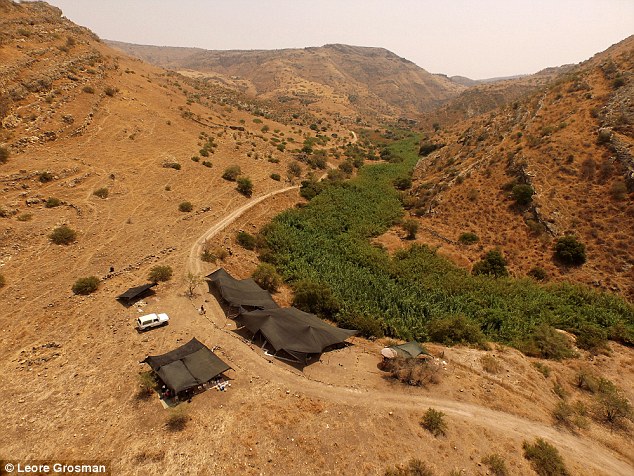
This was clearly a lively community that occupied this area over the course of several centuries. There is also a good chance that they traded with other groups from different sites. For example, the greenstone pendants mentioned earlier may have been traded with groups from the Negev. They were a group either from the south or from the Israel or Hula Valley, which was in the north of modern-day Israel.
According to Dr. Grossman, “Although attributes of the lithic toolkit found at Nahal Ein-Gev II places the site chronologically in the Paleolithic period, other characteristics – such as its artistic tradition, size, the thickness of archaeological deposits, and investment in architecture – are more typical of early agricultural communities in the Neolithic period.” This is an important distinction to make. Scientists want to know where there is potential overlap in the Jordan Valley. It is a great way to ascertain knowledge about the socioeconomic processes that facilitated the shift from the Paleolithic mobile societies made up of hunter-gatherers to Neolithic farming communities. It is a historic shift at a pivotal time in mankind.
